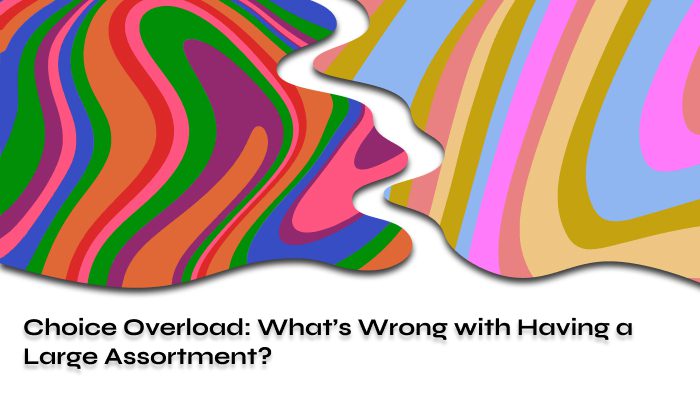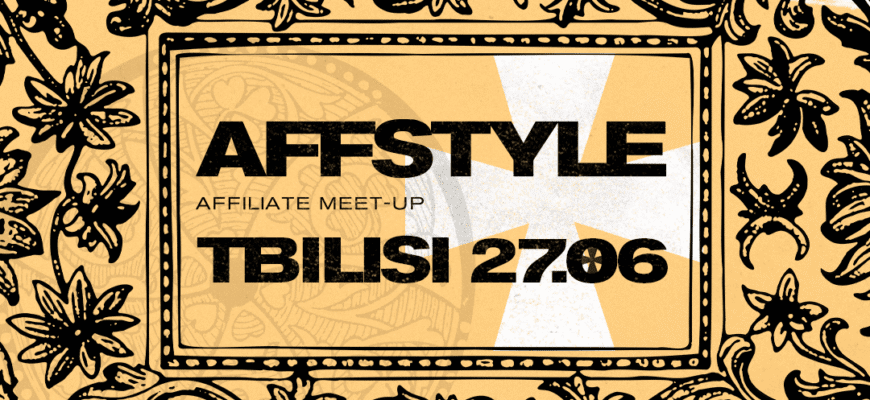When choosing any product in an online store, you never buy the first one you come across. You want to search for something better, cheaper, higher quality or more convenient. However users can become disoriented if the choice is too vast. We’re talking about the phenomenon of “choice overload” and what leads to it.
Choice overload is the inability of one or more individuals to choose one option from many. Due to this inability to choose, people feel anger, disappointment, fatigue or a desire to escape the need to make a decision.
Consequences of an abundance of choices
A wide range of products in a store can be likened to a road sign with several arrows pointing in different directions, with the caption above saying: “Choose“. A vast number of options can evoke negative emotions in customers, including stress and anxiety, which ultimately leads to choice overload. A person becomes so engrossed in making a purchase decision that they eventually give up on it.
You’ve probably encountered such a situation before. Perhaps you’ve experienced it when trying to make a spontaneous purchase in a store or even when choosing a movie to watch. While a broad assortment is a natural feature of the modern market, online store owners, especially in the early stages of their business, should not forget about this.
A study conducted by Colombia University in 2010 vividly demonstrated the negative impact of an excess of choice on consumer behavior.
During the experiment, two stands with samples of jam were set up. The first stand featured 24 varieties of the sweet treat, while the second had only 6. After some time, it was found that 60% of potential buyers noticed the first stand, but only 3% of them made a purchase. At the same time the second stand, with 6 samples, attracted the attention of 40% of passersby and 30% of them made a purchase.
It’s important to note that while choice overload can be a negative experience, a wider variety can also be beneficial in certain situations. For instance, specialty stores catering to specific hobbies or interests thrive by offering a vast selection of niche products. Customers who are passionate about a particular field appreciate having a comprehensive range of options to choose from, allowing them to find exactly what they need.pen_spark
Choice overload factor
When studying the phenomenon of choice overload, it is necessary to determine which factors influence this process. Researchers from the Kellogg School of Management have identified 4 key factors that affect the complexity of choice during the purchasing process:
- Information Volume
Information overload is not always caused by a large number of options. It can be triggered by how the product information is presented: the presence of a dominant option or the absence of information altogether. The essence lies not only in making a specific decision but in ensuring that this decision is correct.
For example, choosing among five products with 50 different options is not always easier than choosing among 50 products with limited information about each.
- Limited Time
Sometimes it’s difficult to make a decision due to time constraints. You enter a store but don’t know exactly what you want to buy. In this situation, in addition to a wide assortment, external factors complicate the choice: you’re in a hurry, the store is about to close, you’re distracted by someone else. As a result, the likelihood of leaving the store without making a purchase is quite high.
- Cost of Purchase
If you plan to buy a smartphone, the decision will not be made impulsively. Most likely, you’ll want to analyze all possible options and make an optimal choice based on a pricing strategy. The more options you have to analyze, the more time the purchase itself will take.
The good news is that choice overload doesn’t always end negatively for the customer. However, cognitive strain is not what the store owner expects from their customers. In the best case, the customer may regret their purchase, and in the worst case, they may leave the store or return the item. Therefore, it’s important to curate the store’s assortment and position it in a way that customers don’t feel overwhelmed and can make informed choices.
From simple to complex
In the initial period of her business, entrepreneur Emma Reed decided to start with a small range of products, consisting of no more than 10 items. This approach allows for a more concentrated store design and focuses customers’ attention on the key product that is relevant to them. It helps to keep customers on the website and not distract them from their primary purpose of visiting.
Emma Reed knows what she’s talking about because her large online retail network has generated significant revenue, with one of her stores bringing in $500,000 just in the past year. The core idea of her method revolves around optimal product positioning. The entrepreneur showcases the most popular and in-demand items in an attractive location, and then carefully presents other products as supplementary offers. This approach allows customers to initially focus on the main, core product and then discover a need for additional items.
Furthermore, Emma Reed believes that such a strategy is an excellent way to test a market niche: “This is especially useful if you’re uncertain about choosing the assortment for your store. Simply showcase several products on the homepage one by one and observe which ones generate the most customer interest“. This method enables you to gather feedback on customer preferences and gain a better understanding of which products may be the most successful in your store.
Utilize analytics for this process
Use virtual analytics to determine the demand for products in your online store. Don’t just rely on sales figures, integrate Google Analytics (or an alternative) to gather information about visitor behavior. If a product receives a lot of traffic but has a low conversion rate, examine its presentation: textual description, color scheme, sizes and other elements. If customers are clicking on a product but not making purchases, there may be a marketing error. Pay attention to the social media platform that your target audience is using like Pinterest, for example. It will help you to understand your audience better.
With this information, you can decide which products to keep in your catalog and which ones to exclude. At the same time, analytics will help you streamline your assortment by removing non-selling items, avoiding choice overload.
Utilizing categories is also essential
For stores with a wide range of products, it can be challenging to eliminate any items. However, to address this issue, you can turn to the advice of successful dropshippers like Chris Wayne and Harry Coleman.
Chris Wayne, the owner of the online store Big Red Gadgets, with extensive experience in e-commerce, emphasizes the importance of product categories for retaining customers on the website. He recommends creating a clear catalog where visitors can easily navigate. According to him, it’s crucial to establish several broad product categories grouped by seasonality, application, manufacturer, or price.
Harry Coleman, whose stores generated $5,000,000 in revenue last year, also supports the idea of categorizing the assortment but suggests starting with a small, manageable number of products. He advises selecting three to four niches and offering four to eight products in each. This way, you can earn a good income without overwhelming the store and attracting visitors.
Once you have your first customers, Coleman recommends expanding your assortment. It’s important not to overly detail the categories to avoid overloading the store.
For example, creating a “bracelets” category is better than having three separate categories for “gold bracelets“, “silver bracelets” and “leather bracelets“. He also underscores the importance of labeling each product with the appropriate keyword in the title. This helps structure the catalog and makes it easier for customers to find what they’re looking for.
Product Description
To address the problem of choosing between multiple product options in your store with similar characteristics, it is important to provide a detailed product description on its card. Pay attention to any attributes that make your products unique and include them in the title.
Your goal is to emphasize the key advantages of the product that may interest the customer. Such detailed information will not only facilitate the search for the product but also simplify the decision-making process. The more detailed the product information, the more useful it will be for the buyer. Consequently, the likelihood of them making the right choice significantly increases.
Looking for a good betting offer to drive traffic may be time-consuming, so we have an article which shows that betting industry has a lot of options apart from sports betting.
Conclusion
Choice overload is a complex phenomenon. As we have discussed today, it is not always perceived negatively by people. Use the tips described above to manage this process in your online store.











